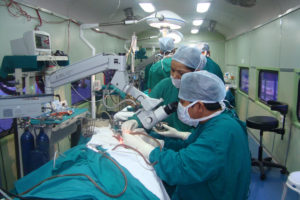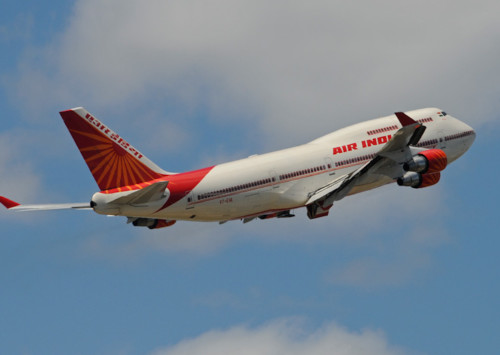The world’s first hospital on rail celebrates 25 years
India & You
Life Line Express, the world’s first hospital on rail, celebrates its silver jubilee. In the course of time, the train has completed its 173 projects in 18 Indian states. It covered 200,000 kilometers and so far has cured about a million people.
Life Line Express also known as the “magic train of India”, with two fully equipped operation theaters, reaches to the areas where 70% of Indians live, but where medical care is often a very distant dream.
“We have a mission to reach out to the poor and marginal sections of our society with all possible medical facilities. We started on a simple idea ‘If people cannot reach to the Hospital, let the hospital reach to them’,” told Media India Group Zelma Lazarus. She is the Founder, Director and CEO, of the NGO Impact India Foundation, that manages the train.
Life Line Express uses 70 000 kms of Indian railway track to reach to the remotest parts of the country, to provide free but also complex medical facilities like the surgical restoration of sight, movement, hearing, or the correction of facial deformities and the prevention and treatment of epilepsy (a disorder in which nerve cell activity in the brain is disturbed, causing seizures) and dental problems. It also provides on the spot diagnostic for pre and post surgical treatment.
“This journey has been easy and successful so far only because of the surgeons, medical personal and volunteers from India and abroad. People from all walks have been very cooperative in making this unique vision a successful mission”, Zelma expressed with gratitude.
Three or four weeks for each project
Once the train starts its journey to the selected village, soon all the volunteer doctors, surgeons and other medical staff reach to the spot. At each projects, the train stays for about 3-4 weeks.
Communication, planning and diplomacy are important to make each project a success. So, the Impact Foundation utilises local volunteers in coordination with primary and secondary medical health centers of the area, in order to spread the message in the villages and to make sure that maximum patients get treatment in a short course of time.
While being inside a train, it never looks like less than a fully functional hospital. All the facilities in the train are that of a well-equipped hospital in the country. Life Line Express is a new hope for hundreds of thousands of people across rural India to receive the best medical consultancy, free of cost.
Doctors there try to treat as many patients as possible but time, space and the high number of people coming for treatment bring up also some limitations. As Zelma Lazarus says, “the biggest challenge for Life Line Express is its limited capacity, it cannot be the substitute for the permanent rural health care setup, still it is doing all what a welfare state is supposed to do”.
She believes that with this yet small capacity it is not possible for them to cover all the areas, but she aims to catalyse the change and impress all the states of India, to start such trains to improve rural health care system.
A lot of road has been covered yet. In a world premiere, Life Line Express train hospital was inaugurated on July 16, 1991, with the help of Indian railways and of the Indian Health ministry. It was also funded by many corporate groups, private partners and managed by Impact India Foundation.
Now, with two more coaches donated recently by Indian Railways, the Impact India Foundation is looking to extend its medical service to major surgeries. “We are trying to improve our services and want to provide better health care facility, and with the help of Indian railways we have increased the capacity to seven coaches”, explained Zelma Lazarus.
With the kind of medical facility people receive during the hospital train halt in their village, they would never want the train to leave, but there are thousands of underprivileged villages in India that the hospital train has to reach.
The question remains: does a single visit by the medical train to a particular area solve all the medical problems? As the answer is unfortunately quite obvious, the more general issue of better health care services to rural masses is still to be addressed.











